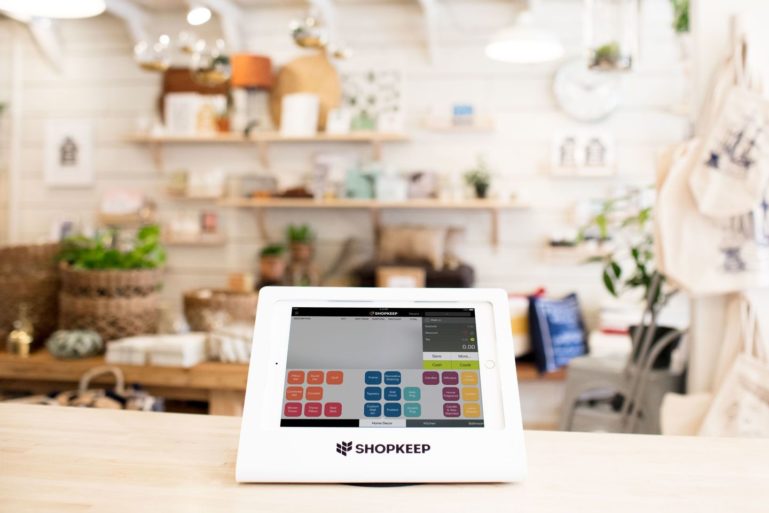
7 Things To Look For In Inventory Management Software
Let’s cut to the chase. If your business carries more than five stock items that are sold for profit, you need inventory tracking software.
As a small business owner, it’s your job to minimize the likelihood of errors. Manual inventory tracking with a clipboard and paper or an Excel spreadsheet leaves room for human error which can lead to a loss of inventory and profits.
Inventory management software is such an integral part of your day-to-day operations that you can’t afford to cut corners. Luckily, you don’t have to.
Here are 7 essential things to look for during your search for the best inventory management software.
1. Cost
Thanks to the introduction of cloud-based software solutions, it’s more affordable than ever for small businesses to implement inventory management software. While it might be tempting to go out and buy one of the solutions jam-packed with all the bells and whistles, think again my friend. You’ll be doing yourself a huge disservice by paying for a bunch of features you may not need.
So, before you can consider cost, you need to consider what you need. Take a look at your current business plan and model and ask yourself the following: What problems will the software solve? What are the pain points of your current process? How will the software help your business run more efficiently? The answers to these questions will help provide guidance on the features you’ll need.
Understanding your business needs is important because features and functionality strongly correlate with cost. For instance, if you need a simple program that will track product stock levels and cost of goods sold, it may only cost you a few dollars a day. If you need more advanced features like supply chain management or warehouse management, your solution could cost a few hundred dollars a month.
SEE ALSO: How to Run a Profitable Business (Minus the Costly Mistakes)
2. Ease of Use
While cost plays an important role, so does the usability of the software. Consider how technically savvy you are and where your employees are on a technical scale. If it’s going to take your staff hours upon hours to learn the basic operational procedures and inventory controls, it’s probably not worth your time. Think about it. Every time you hire a new employee, you’re going to have to spend hours training each and every one of them.
As an owner, if you find yourself struggling to navigate the system’s back-office to find purchase order data or reorder triggers to manage order fulfillment, you may want to consider a solution that’s more user-friendly. Would you buy a car with a manual transmission if you didn’t know how to drive a stick shift? Probably not. But if you did, you’d have to take out the time to learn.
The same goes for inventory management software. If the learning curve is too high for you and your employees, it’s going to cost you a lot of time, energy, and money that could hurt your business in the long run.

3. Choose a Credible Provider
We know, we know, you’re a small business owner and you want to support budding talent. As entrepreneur, it’s in your DNA. Because ShopKeep was founded by a brick-and-mortar merchant we wholeheartedly agree with your support of entrepreneurship, but in this case we would err on the side of caution. Inventory tracking software and POS software are so ingrained into the day-to-day of your business operations that taking a chance on a company in which you’re ‘customer zero’ could spell big problems.
In most cases, you won’t be the very first customer, but you still want to make sure that other businesses are successfully using system. In other words, don’t be afraid to ask for references. Talk to other small or mid-sized business owners and find out their opinion of the solution.
You can also check out popular review websites like Trustpilot, one of the world’s largest online review communities. They are dedicated to providing genuine reviews of companies from customers who’ve purchased products or services from them. 85 percent of consumers trust online reviews as much as personal recommendations. I know that I fall into the 85 percent, do you?
4. Reports and Analytics
These days, data is a hot topic. As evident in the recent Facebook data scandal, there’s no denying that data plays a huge role in understanding business performance and customer habits.
Beyond collecting data, inventory management solutions need to be able to present that information into neatly organized reports for the user. What’s the point of having data if you have to jump through hoops to figure out what it all means?
Most inventory management software will have pre-defined reports that provide the key metrics you need. Others will take it a step further and give you the ability to drill down and customize reports to see unique insights that are important to your business.
SEE ALSO: What a POS Report is and How it Can Boost Your Business
Depending on your industry, you may want inventory management software that can partially or entirely automate the process of ordering new supplies. At the very least, it’s helpful to have notifications or reports that let you know what items are out of stock.
5. Integrations:
This is a big one to consider not just for the present, but also for the future. Chances are you’re using more than one software tool or application to run your business. In fact, an Intuit (QuickBooks) survey found that 68 percent of small businesses use an average of 4 apps to solve everyday problems and make their business more efficient. If one or more of these apps can ‘talk’ to another via an integration, the more time you’ll save.
Since inventory management is so closely tied to other areas of the business, it serves as a good starting point to see what other systems integrate with your inventory software.
While you may not need any of these integrations now, as your business grows you’ll want to make sure these options are available. A few common integrations to consider, include:
- Ecommerce. If you decide to sell your goods online, you’ll need an online inventory management system to track your digital inventory. Ideally, you’ll want to merge your physical and digital world so you can track sales, stock level, and orders between your website and inventory software.
- Shipping. If your online sales are taking off and you’re expanding into online marketplaces like Amazon or eBay, a shipping app like ShipStation will be a huge timesaver. You can automate nearly every step of the shipping process with presets and automation rules.
- Accounting. 46 percent of small business owners that don’t have a positive work-life balance say administrative tasks like bookkeeping are one of their major roadblocks in achieving balance. Why spend hours dwelling over spreadsheets and accounting details when you can automate the process?

6. Multiple Locations
Inventory management is hard. It’s even harder when you own multiple storefronts. If you have multiple store locations or plan on opening new storefronts, you’ll want one centralized tool to help manage inventory. Make sure the solution you invest in can support your potentially expanding business.
7. Support and Training
Some business owners overlook the importance of having access to quality customer support. The last thing you want to happen after you buy new software is to be left out it in the cold to figure out how to use it. Unless you’re super confident in your ability to figure it all out, make sure the software provider offers training and ongoing 24/7 support or else you may find yourself up a creek without a paddle.
No one ever said finding the best inventory management software for your business was an easy task. However, now that you understand what features to look for during your search, you are better prepared than most. Most importantly, take your time and be strategic. One small hasty decision now can cost you big time down the road.
Want to try ShopKeep for yourself?
Just answer a few easy questions.
Need help finding the right point of sale?
Just complete the form. We’ll call you right back to explain how ShopKeep can work for you.
Hit the ground running.Sprinting, in fact!
Read our free, comprehensive guide, Small Business 101, to learn all you need to know about starting a thriving business.

